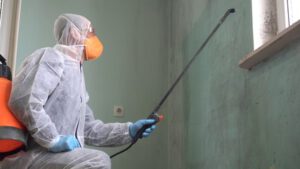If you have noticed yellow spots on your walls or ceiling, you may need to contact a professional. These molds can be difficult to remove and can do extensive damage to wood and construction materials. Depending on the severity of the infestation, remediation costs may reach $2,000 or more. To prevent further damage, keep your home clean.
The first step in mold remediation is determining where the mold infestation is. This is important because mold can affect humans with its proteins and chemicals. Once the mold is located, the next step is determining the extent of the contamination. This is a critical step for any remediation process. If you think that you may have mold in your home, you should consult a professional mold remediation service to help you figure out the best way to treat it.
Documentation will assist in the process by providing a detailed picture of the mold damage. This can include pictures, writings, and videos. It will help in the creation of a thorough remediation plan and answer questions regarding the project, such as how long it will take and whether or not you will have to relocate. Documentation will also aid in identifying the patterns that household mold tends to create.
Mold remediation is expensive, and it is best to seek help as soon as possible. It can cost between $10 and $25 per square foot, and costs can escalate as the mold spreads across a large area. If you do have a large mold problem, it is best to seek help from a professional mold remediation service to protect your home. By using protective gear and air scrubbers, mold remediation professionals will ensure that your home is safe to breathe in.
As part of large-scale remediation, effective communication with building occupants is crucial. The building owner should notify all affected residents of the mold infestation and what the remediation plan will involve. In some cases, group meetings may be helpful in spreading the word. For the most part, remediation activities should take place during off-hours, which minimizes the possibility of occupant exposure.
During the remediation process, professionals will eliminate the source of moisture in the area to prevent future mold problems. Often, this involves isolating the affected area by securing windows and covering openings with plastic sheeting. It is also important to fix the water source that has led to mold infestation in the first place.
If mold has spread into the air, you must act quickly. Professional mold remediation technicians will spray the affected areas with water, scrub away any porous surfaces, and use HEPA filters when cutting into materials. Then, they will bag and carry away the affected materials. Afterward, they will spray the area with a biocide to kill the mold spores.
The first step in mold remediation is to determine what kind of mold is in your home. A major infestation of mold can ruin your home and your health, so you should take steps to ensure it is eliminated quickly and safely. The process can be challenging if you don’t have the proper knowledge and tools. You might even consider self-treating the problem, but it isn’t as easy as it seems.
After the mold has been removed, the remediation process should include a thorough cleaning, which may include deodorization and fogging equipment. The professionals will also make recommendations on steps you should take to prevent the outbreak from recurring. If you don’t do these things, mold remediation can’t be complete without recommendations on preventative measures. Afterward, a post-remediation inspection will be conducted to determine the success of the remediation process and the extent of cleanup.
If the mold is present in your home, a professional mold inspector will use certified laboratories to test for the presence of microscopic mold spores. This will determine the safe zone for your home. The goal of mold remediation isn’t to eliminate all the mold spores but to eliminate the problem and restore a healthy environment.
